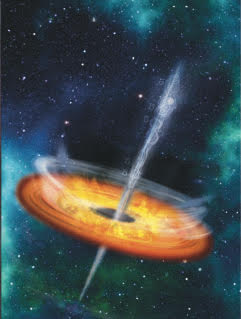Ari Laor and Ehud Behar are part of an International team reviewing the radio emission mechanisms from radio-quiet active galaxies. The review was published in Nature Astronomy on April 29th 2019.
Supermassive black holes reside in the nuclei of most galaxies. Some of these galaxies experience a phase of activity, where matter accretes onto the supermassive black hole, and they become active galactic nuclei (AGNs). AGN produce radiation across the entire electromagnetic spectrum, which can outshine the
emission of the 10-100s of billions of stars in the galaxy. Some of the AGN are called
radio-loud, where strong radio emission is produced by relativistic jets of outflowing magnetised plasma. But most AGNs are radio-quiet, and the source of their weak radio
emission is not established yet. In these AGNs, the absence of a luminous jet allows to probe radio emission from a wide range of possible mechanisms, like star formation, winds, shocks, and accretion disk coronae. The radio can be used as a tool to study these mechanisms with unprecedented precision and spatial resolution, owing to the current and forthcoming new generation of highly sensitive radio arrays.




